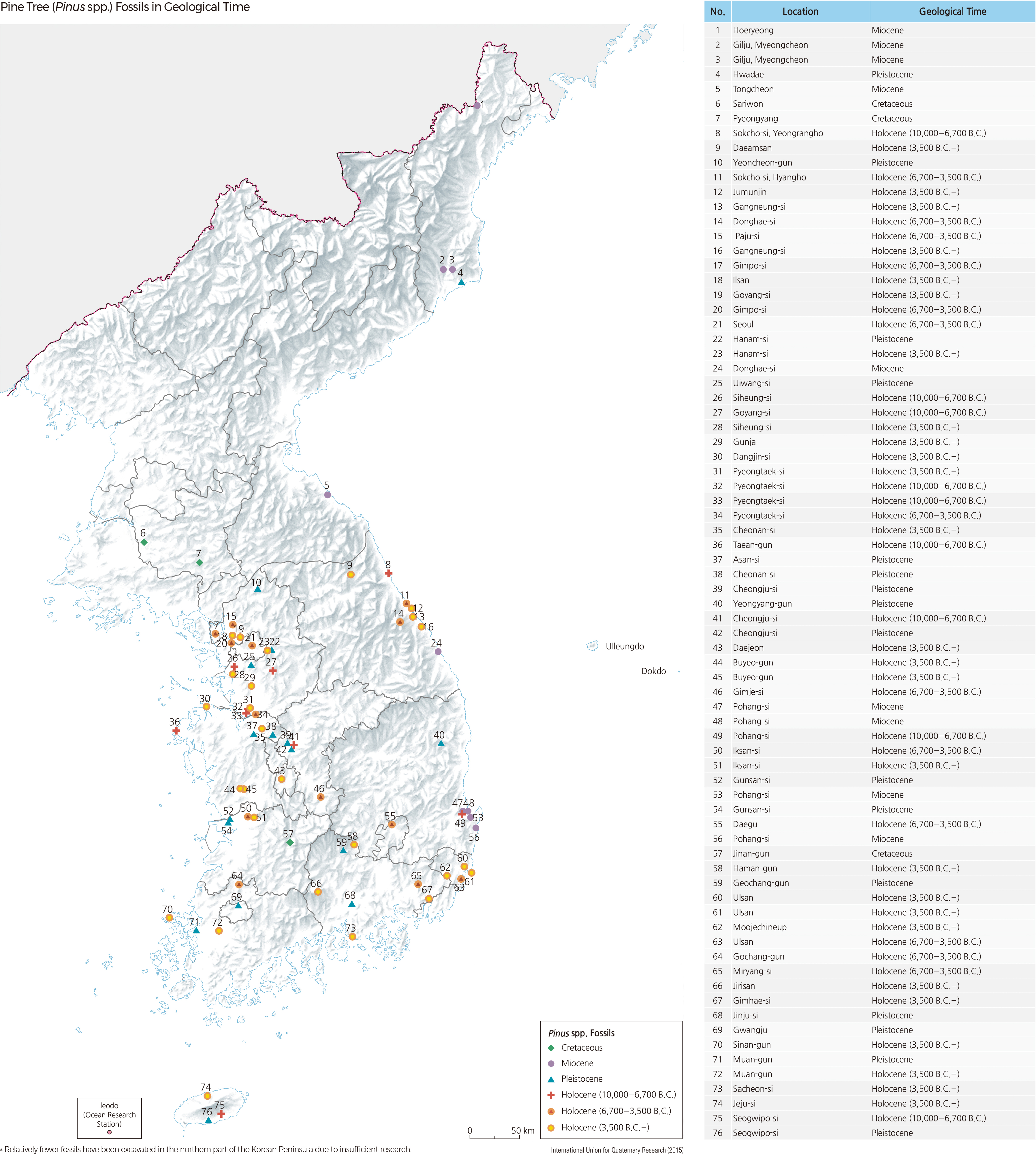English II 2020
The earliest occurrence of the genus of a pine tree or Pinus on the Korean Peninsula dates to the Cretaceous; the presence of Pinus spp. on the Korean Peninsula continued throughout the Miocene, Pleistocene, and Holocene to the present day. During the Quaternary, Pinus spp. had a wide distribution and maintained dominance over the Korean Peninsula. Pinus spp. later diversified into cold-tolerant and warm-tolerant species. Cold-tolerant Pinus spp. (haploxylon) with five needles occupied the northern and high mountains, but Pinus spp. (diploxylon) with two needles was common in lowlands and coastal regions.
Since the Holocene, Pinus species exhibiting niche characteristics have occupied different habitats and locations, becoming a dominant component of the vegetation. The dominance of Pinus spp. is partially due to anthropogenic disturbances, such as agriculture, fire, and land-use patterns at lowland sites. Boreal Pinus species, including Dwarf Stone Pine (Pinus pumila), Korean Pine (Pinus koraiensis), and Chinese Hard Pine (Pinus tabuliformis), migrated into the Korean Peninsula during the Pleistocene glacial epochs, away from the harsh environment of northeast Asia. Their distribution is currently confined to the alpine and subalpine belts of the Korean Peninsula.
Black Pine (Pinus thunbergii) is found mainly in the southern and central-southern coastal areas of Korea. Ulleungdo White Pine (Pinus parviflora) occurs in isolation in Ulleungdo and some Japanese islands. Species like Black Pine (Pinus thunbergii) with larger, winged seeds and often dispersed by wind have wider distributional ranges than species without winged seeds, such as Dwarf Stone Pine (Pinus pumila) and Korean Pine (Pinus koraiensis), which are dispersed by birds and rodents. These species have narrow distribution ranges around the montane and high mountain areas.
Species with disjunctive distributions, such as Dwarf Stone Pine (Pinus pumila) in the alpine and subalpine belts of northern and central Korea, Korean Pine (Pinus koraiensis) in mountainous areas, and Ulleungdo White Pine (Pinus parviflora) in Ulleungdo are more vulnerable to climate change such as global warming than other Pinus spp. Korean Red Pine (Pinus densiflora) and Black Pine (Pinus thunberigii) in lowland and coastal areas are under the influence of deforestation, overdevelopment, and insect outbreak.
|
